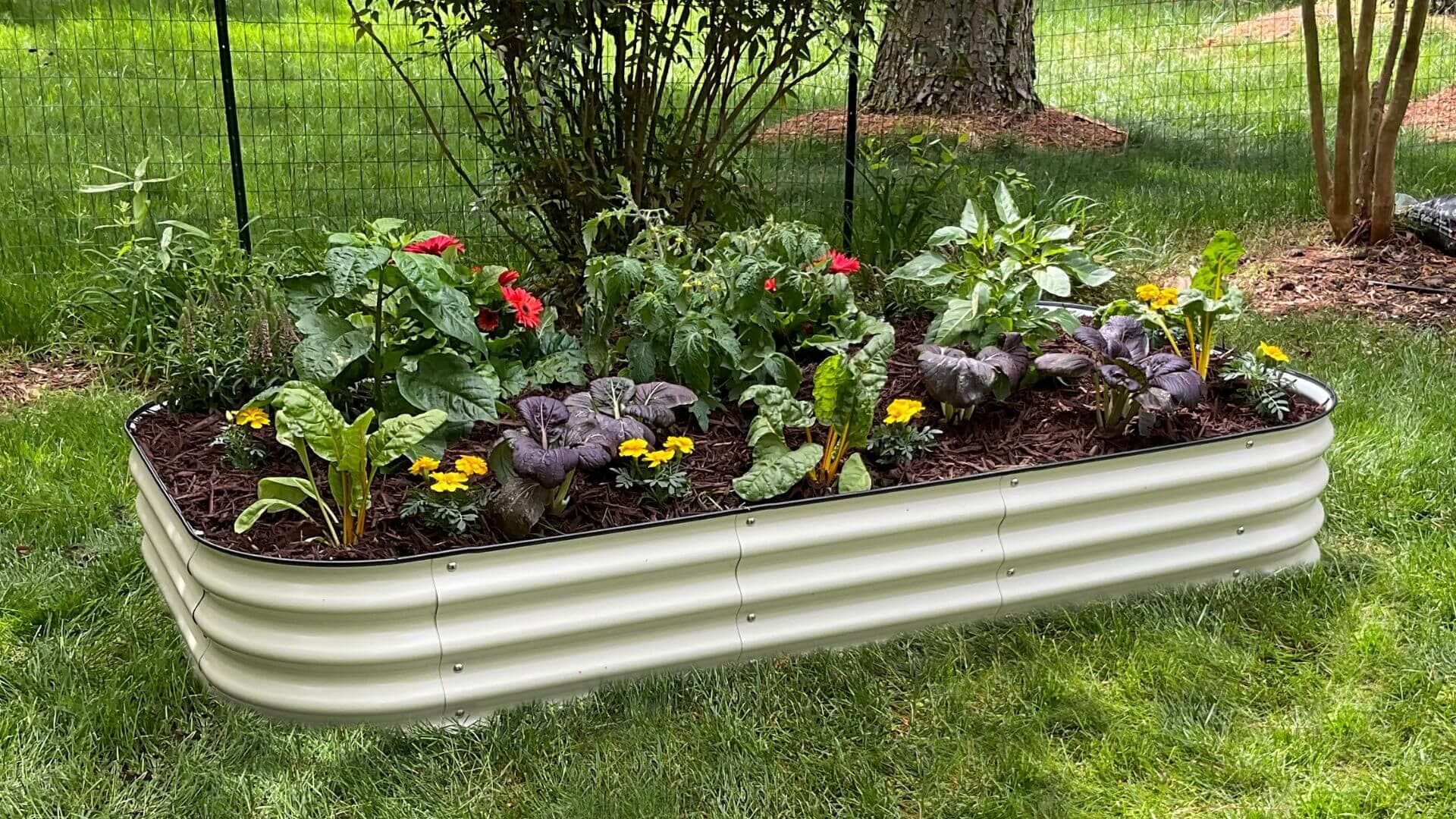In the world where urbanization is constantly shrinking the green footprints, gardening enthusiasts are perpetually on the lookout for innovative and sustainable ways to bring nature closer to home. Metal raised garden beds have emerged as a sterling solution, not only for urban gardeners but also for anyone keen on adding an aesthetic yet functional touch to their outdoor space. This comprehensive guide will explore the why and how of integrating metal raised garden beds into your gardening haven.
Why Choose Metal Raised Garden Beds?
Durability and Longevity
One of the most compelling reasons to opt for metal raised beds is their durability. Unlike their wooden counterparts, metal beds are not prone to rot, decay, or termite damage. High-quality galvanized steel can withstand the elements, ensuring that your investment pays dividends in terms of longevity and minimal maintenance.
Aesthetic Appeal
Metal raised beds offer a sleek, modern look that can complement any outdoor décor. With a variety of colors and finishes available, these beds can be a stylish addition, elevating the overall appearance of your garden or yard.
Improved Soil and Plant Health
Elevating your planting area improves drainage and reduces the risk of soil compaction, both of which are crucial for healthy plant growth. Additionally, filling your raised beds with a customized soil mix can lead to more robust plant development and yield.
Pest Deterrence
The elevated design and metal construction can help deter various pests, including slugs and snails, from wreaking havoc on your plants. This natural pest control method decreases the need for chemical interventions, yielding healthier produce and flowers.
How to Select the Right Metal Raised Garden Beds
When choosing metal raised beds, consider the following factors to ensure you select the best option for your gardening needs:
Material Quality
Look for high-quality, corrosion-resistant metal such as galvanized steel, which is treated to withstand rust and weathering. Remember, the quality of the material directly influences the longevity of your garden beds.
Size and Depth
Consider the dimensions carefully. The bed should be wide enough to allow easy access to your plants without stepping into the bed, which can compact the soil. Depth is also pivotal; deeper beds are ideal for root vegetables and plants with extensive root systems.
Assembly and Installation
Opt for beds that are easy to assemble and come with clear instructions. The ease of installation is especially important for DIYers who want to avoid complicated assembly processes.
Drainage
Ensure the beds have adequate drainage to prevent waterlogging. Some metal beds come with pre-drilled holes, while others may require you to add them.
Installation Tips
- Location: Choose a spot that receives ample sunlight, as most vegetables and flowers require 6-8 hours of direct sun per day.
- Preparation: Clear the area of grass and weeds before setting up your raised bed. Although not absolutely necessary, laying a weed barrier can help prevent unwanted growth under the beds.
- Assembly: Follow the manufacturer’s instructions carefully. Most metal beds can be assembled with basic tools.
- Filling: Use a mix of high-quality garden soil, compost, and other organic matter to fill your beds. This enriches the soil, promoting better plant health and yield.
Creative Ideas for Metal Raised Garden Beds
- Herb Gardens: Dedicate a raised bed to culinary herbs like basil, thyme, and rosemary for a convenient kitchen garden.
- Pollinator-Friendly Flowers: Fill a bed with flowers that attract bees, butterflies, and other pollinators to support biodiversity.
- Vegetable Patch: Grow your own organic vegetables. Consider companion planting to maximize space and encourage beneficial insect activities.
Caring for Your Metal Raised Garden Beds
Although low maintenance, a few simple practices can ensure your metal beds remain in top condition:
- Regularly check for any signs of damage or wear.
- Keep the soil at an optimal level, topping it up with compost as needed.
- Clean the exterior of the beds occasionally to maintain their appearance.
Conclusion
Metal raised garden beds offer a blend of functionality, durability, and style that can transform your gardening experience. By choosing the right beds for your needs and following best practices for installation and maintenance, you can enjoy bountiful harvests and a beautiful outdoor space for years to come. Whether you’re a seasoned gardening enthusiast, an urban gardener, or a home improvement DIYer, metal raised garden beds are a worthy addition to your green space endeavors. Happy gardening!
